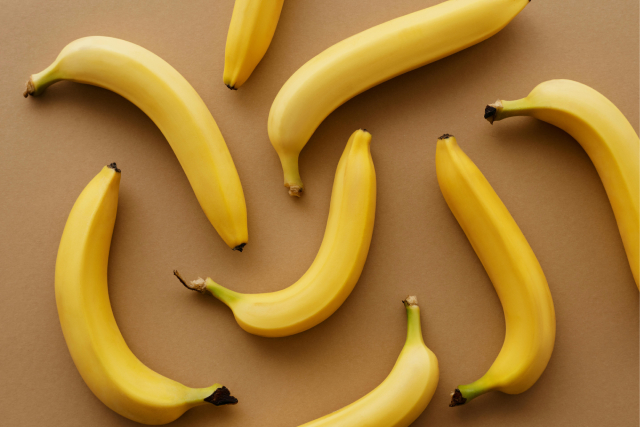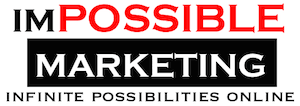Google’s Nano Banana Explained: What It Means For Businesses
Posted on: November 11, 2025

Running a small business nowadays requires wearing many hats and taking on various responsibilities, from managing marketing and content creation to handling social media activities, customer engagement, and more, all while trying to keep operations efficient. Amidst these growing demands, Google has a new innovation joining its ranks of AI-driven solutions, like their Bard AI chatbot, which is designed to address one of the most time-consuming aspects of digital marketing: visual content creation. With tools like this, AI is taking SEO to the next level, helping businesses streamline content production while improving search visibility and engagement.
Enter Nano Banana, Google’s new AI-powered image generator that produces professional-quality visuals in seconds rather than hours. Built on the Gemini 2.5 Flash Image model, Nano Banana enables businesses to create, refine, and iterate on visuals with ease and precision that were previously unimaginable. For small business owners and marketing professionals, the real question is not merely what Nano Banana is, but why it matters. This tool is capable of more than just generating static images, as it is great at collaborating with users, acting as an intelligent creative partner capable of reasoning visually and responding conversationally to iterative feedback.
To any business owner looking to stay ahead, it’s genuinely worth considering working with an agency that can help quickly leverage this technology to streamline content workflows and maximise brand impact.
What is Nano Banana by Google?
Nano Banana is Google’s next-generation AI image generation system powered by the Gemini 2.5 Flash Image model. Unlike previous AI image tools that relied on one-shot prompts with unpredictable outcomes, this system introduces a conversational and dynamic editing process designed for modern business needs.
Rather than generating an image and starting over when results fall short, Nano Banana enables a process called multi-turn editing, where you can refine an image through a back-and-forth dialogue. This shift from “prompt-and-wait” to “prompt-and-collaborate” makes image creation much faster, more creative, and intuitive.
Besides this workflow transformation, Nano Banana introduces three standout capabilities that address long-standing limitations in generative visual AI:
1. Conversational editing
This feature allows users to modify images through natural dialogue. Instead of restarting each time a design element needs adjusting, users can instruct the AI to tweak specific details, such as adjusting colours, repositioning elements, or refining compositions, all through conversation-like commands.
2. Character consistency
One of the biggest frustrations with AI-generated images has been the inability to maintain visual consistency for people, mascots, or branded objects across multiple images. Nano Banana’s Gemini 2.5 engine reportedly achieves a 95%+ consistency rate, ensuring uniformity in marketing campaigns, product visuals, and branded storytelling.
3. Multi-image fusion
This feature allows users to upload and blend up to three images into one cohesive visual. It can merge concepts, transfer artistic styles, or apply one image’s aesthetic to another, enabling brand designers to remix and evolve their visual identity without losing cohesion.
Underlying all these capabilities is the “Flash” principle, a core design philosophy centred on speed. While comparable models take between 8–15 seconds to render a high-quality image, Nano Banana generates results in roughly 1–2 seconds. For creative professionals, this turns what was once a waiting period into a real-time interactive session, significantly improving productivity and creative flow.
Why Nano Banana is a game-changer for business visual content
In today’s digital landscape, visual content is a business imperative, not just an aesthetic. Posts featuring high-quality images attract significantly more engagement, while product listings with professional photos achieve stronger conversions. However, maintaining such a visual standard has long been a challenge, especially for smaller enterprises.
Traditionally, businesses have faced three primary options:
1. Hiring professionals – While photography studios and design agencies produce excellent results, the costs add up quickly. A single photoshoot can cost thousands, and this doesn’t include the time or expense of editing and producing variations for multiple platforms.
2. DIY content creation – Many entrepreneurs have tried to handle visual production themselves using tools like Photoshop or Illustrator. However, learning these complex tools demands time; time that could otherwise be spent scaling their business.
3. Freelancers or stock images – Cheaper alternatives often lead to inconsistent visuals and generic imagery, making it difficult for brands to differentiate themselves in competitive markets.
Nano Banana eliminates the need to choose between cost, quality, and time. It allows small businesses to produce visually consistent, on-brand, and high-quality imagery almost instantly. Simply describe what you envision (“a product flat lay in soft daylight with minimalist textures,” for instance) and the AI interprets and delivers results that rival professional photography.
The technology’s accessibility is what truly makes it worth paying attention to. No design degree, complex software, or technical knowledge is required. With intuitive interfaces and conversational refinement, even non-designers can produce visuals that look polished and purpose-built. For businesses already working with a GEO agency, Nano Banana can become an integral part of broader digital strategies that optimise both local reach and international appeal through visually coherent campaigns.
How to access Google’s Nano Banana
Google has made Nano Banana widely accessible through multiple platforms, ensuring flexibility for individuals, developers, and enterprises alike:
- For individuals: The Gemini App (available on both web and mobile) allows users to generate and edit images seamlessly. The app automatically switches between Google’s Imagen model for generation and Nano Banana for refinement when an image edit is requested.
- For developers: Google AI Studio offers a prototyping environment where developers can test, prompt, and build applications powered by the Gemini 2.5 model without requiring extensive coding knowledge.
- For enterprises: Businesses that require full integration capabilities can access the model through Google’s Vertex AI platform or the Gemini API, enabling large-scale automation of creative workflows, marketing asset generation, and internal content tools.
While Nano Banana is part of the Gemini 2.5 family, it’s not the only variant. Each tier in the Gemini suite caters to different creative, analytical, or computational needs, but Nano Banana is specifically optimised for visual speed and iterative design.
Is Nano Banana free to use?
Nano Banana is partially free, depending on the access channel. Individual users exploring the Gemini App can experiment with limited image generation features at no cost. However, business and enterprise users accessing the model through API calls are subject to a transparent, usage-based pricing structure.
As of 2025, API access costs $30 per one million output tokens. On average, a single image creation or edit consumes about 1,290 tokens, which translates to each image costing around $0.039. This pay-per-use model offers clear financial predictability, making it easy to compare costs with traditional methods such as stock photo subscriptions or freelance designer fees.
Prompting best practices for business use
While Nano Banana is highly advanced, its performance still depends on how well prompts are crafted. Businesses can achieve the best outcomes by following a few simple prompting principles:
1. Use narrative descriptions, not just keywords
Avoid keyword lists like “office, business, modern.” Instead, describe a full scene: “A minimalist office desk setup featuring sleek metallic textures, soft ambient light, and modern décor.” The model’s natural language understanding allows it to produce images that reflect context and intent.
2. Incorporate photographic terminology
For photorealistic images, use terms familiar to photographers, like camera angles, lens types, lighting, and mood. For example: “Captured with an 85mm lens during golden hour lighting, featuring soft bokeh and a warm, professional atmosphere.”
3. Be explicit for branding assets
When generating logos, icons, or stickers, specify stylistic details (“a kawaii-style sticker with a clean white background”). This ensures the AI produces assets ready for direct use in design software or on digital storefronts.
4. Reverse-engineer with other AI tools
Upload a reference image and ask an AI text model to describe it in prompt form. This reverse-engineering method helps teams recreate brand-consistent imagery or adapt visuals across campaigns.
5. Leverage sketch uploads
If you have a draft or blueprint, upload it. Nano Banana can interpret rough sketches, transforming them into refined visuals, which is ideal for product prototypes, concept art, or interior design mock-ups.
Conclusion
It’s no understatement that Google’s Nano Banana redefines how businesses can create and manage visual content. With its real-time speed, visual reasoning, and conversational design, it empowers even the smallest enterprises to produce marketing visuals once limited to large creative teams or agencies.
As AI continues to reshape how we approach creativity, tools like Nano Banana blur the line between designer and machine, allowing human ideas to take centre stage while technology handles the technicalities. For business owners in pursuit of greater efficiency, consistency, and accessibility in their visual marketing, the availability of Nano Banana marks a pivotal moment in creative automation.


